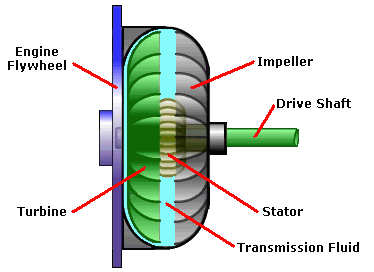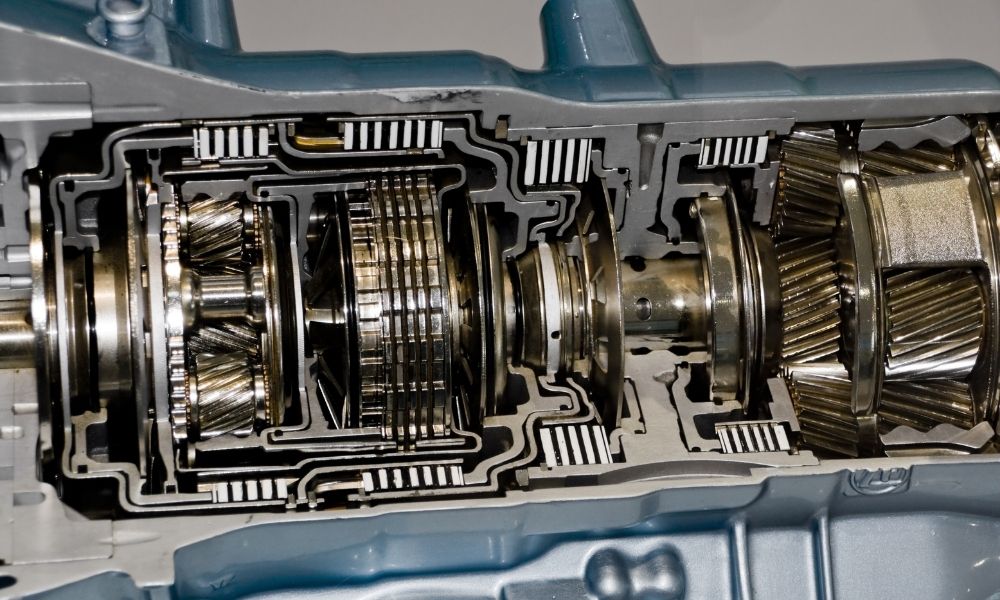The 2015 GMC Acadia transmission shudder is often caused by mechanical wear, fluid inconsistencies, torque converter issues, or external factors. Regular maintenance, fluid checks, and expert consultations can provide effective solutions.
The 2015 GMC Acadia stands as a testament to GMC’s commitment to engineering excellence and automotive innovation. As a mid-size SUV, it has garnered a reputation for its robust performance, spacious interiors, and advanced safety features.
However, like any machine, it’s not without its quirks. One such quirk that has caught the attention of many Acadia owners is the phenomenon known as “Transmission Shudder.”
Transmission Shudder can be best described as a quick, shaking, or juddering sensation originating from the vehicle’s transmission. This sensation is often likened to driving over rumble strips on the side of a highway.
While it might seem like a minor inconvenience, if left unchecked, it can escalate into more significant transmission issues, potentially compromising the vehicle’s performance and safety.
In this deep dive, we aim to shed light on the causes behind the 2015 GMC Acadia’s transmission shudder, its implications, and the solutions at hand. Through our journey, we’ll arm you with the knowledge to address this issue head-on, ensuring that your drive remains as smooth as the day you first took the wheel.
Understanding Car Transmissions: For those new to the world of automotive mechanics, we’ve prepared a comprehensive guide detailing the intricacies of car transmissions. Dive in to grasp the foundational knowledge that will aid in understanding the nuances of our discussion ahead.
8 Speed Torque Converter Shudder – Fluid Exchange and Fix
Common Causes of GMC Acadia Transmission Shudder
Mechanical Wear and Tear

Every vehicle, no matter how well-engineered, is susceptible to wear and tear over time. The transmission, being one of the most complex components of a car, is no exception. With the 2015 GMC Acadia, certain mechanical parts within the transmission can wear down, leading to irregularities in its function.
4 Symptoms of Transmission Shudder
When the transmission system of your 2015 GMC Acadia starts to falter, it sends out distinct signals. Recognizing these early signs can be pivotal in preventing further damage and ensuring a longer lifespan for your vehicle. Let’s delve deeper into these symptoms:
Vibrations
One of the most noticeable symptoms of transmission shudder is the vibration that can be felt throughout the vehicle. This isn’t your regular road vibration; it’s more pronounced and unsettling.
- When it occurs: These vibrations are especially prominent when accelerating from a stop or when shifting between gears. It can be felt in the steering wheel, the vehicle’s floor, or even the seats.
- Why it matters: Persistent vibrations can lead to wear and tear on other vehicle components, making it essential to address the root cause promptly.
Hesitation During Acceleration
Instead of the smooth acceleration you’re accustomed to, the vehicle might seem reluctant or sluggish when you press the gas pedal.
- When it occurs: This hesitation is often felt when trying to overtake another vehicle or when merging onto a highway.
- Why it matters: Hesitation not only affects your driving experience but can also be a safety concern, especially when quick acceleration is needed.
Unusual Noises
The serene hum of your engine might be interrupted by noises that seem out of place. These can range from grinding sounds to high-pitched whines.
- When it occurs: Such noises are commonly heard when the vehicle is in motion, especially during gear shifts or when accelerating.
- Why it matters: Unusual noises are often indicative of parts rubbing against each other or components not functioning optimally. Ignoring these sounds can lead to more significant issues down the line.
Shift Irregularities
The transition between gears should be smooth and almost unnoticeable. However, with transmission shudder, these shifts can become hard, jerky, or even delayed.
- When it occurs: You might experience this when moving from a stop or when transitioning between higher gears.
- Why it matters: Irregular shifts can strain the transmission system, leading to increased wear and potential failures in the future.
Preventive Measures:
- Regularly inspect the transmission for signs of wear.
- Ensure timely replacements of worn-out parts.
- Adhere to the vehicle’s maintenance schedule.
You Can See: Common Transmission Wear Issues
Fluid Issues

The transmission fluid plays a pivotal role in ensuring the smooth operation of the transmission. It acts as a lubricant, preventing friction between the moving parts. However, over time, this fluid can degrade or become contaminated, leading to transmission shudder in the 2015 GMC Acadia.
Importance of Transmission Fluid:
- Acts as a coolant, preventing the transmission from overheating.
- Helps in transmitting force and pressure.
- Protects metal surfaces from wear.
Identifying Fluid Problems:
- Dark or burnt-smelling transmission fluid.
- Low fluid levels.
- Presence of metal particles in the fluid.
You Can See: Importance of Transmission Fluid
Torque Converter Problems

The torque converter is a type of fluid coupling that transfers rotating power from the engine to the transmission. If it malfunctions, it can lead to transmission shudder among other issues.
Understanding the Torque Converter’s Role:
- Allows the engine to keep running when the vehicle is stationary.
- Multiplies the torque when required.
Common Issues and Fixes:
- Damaged or worn-out torque converter components.
- The torque converter clutch not engaging or disengaging properly.
- Solutions include replacing the torque converter or repairing its components.
You Can See: Torque Converter and Transmission Sync
External Factors
While internal components play a significant role in transmission shudder, external factors can also influence its onset.
Environmental Impacts:
- Cold weather can thicken transmission fluid, affecting its flow.
- Overheating in hot climates can lead to transmission issues.
Driving Habits and Their Effects:
- Aggressive driving can strain the transmission.
- Not allowing the car to warm up in cold climates can lead to shudder.
Solutions The Transmission Shudder
Regular Maintenance and Checks
Routine checks and maintenance are the first line of defense against any automotive issue, including transmission shudder.
Importance of Routine Checks:
- Early detection of potential problems.
- Extends the lifespan of the transmission and vehicle.
- Ensures optimal performance and fuel efficiency.
What to Look for During These Checks:
- Fluid levels and quality.
- Signs of wear on transmission components.
- Unusual noises or vibrations.
You Can See: Transmission Maintenance Guide
Fluid Replacement and Upgrades
Transmission fluid is the lifeblood of the transmission system. Ensuring its quality and quantity is paramount.
When and Why to Replace Transmission Fluid:
- Typically, every 30,000 to 60,000 miles, or as recommended in the vehicle’s manual.
- To prevent contamination and degradation which can lead to transmission issues.
Benefits of Using High-Quality Fluid:
- Reduces friction and wear.
- Ensures smooth gear shifts.
- Prevents overheating of the transmission.
Mechanical Repairs
Sometimes, the solution requires a hands-on approach to rectify mechanical issues within the transmission.
Identifying When a Repair is Needed:
- Persistent transmission shudder even after fluid replacement.
- Slipping gears or difficulty in shifting.
- Unusual noises from the transmission.
DIY vs. Professional Repairs:
- While some minor issues can be addressed with DIY solutions, major repairs should be entrusted to professionals to ensure safety and efficacy.
You Can See: Transmission Repair Manuals.
Expert Consultations
When in doubt, seeking the expertise of a professional can provide clarity and direction.
When to Consult an Expert:
- If transmission issues persist despite trying multiple solutions.
- Before undertaking major repairs or replacements.
Benefits of Getting a Professional Opinion:
- Accurate diagnosis of the issue.
- Recommendations tailored to the specific condition of the vehicle.
- Peace of mind knowing the vehicle is in expert hands.

Credit: https://transpartswarehouse.com/
FAQs
What is the average lifespan of a 2015 GMC Acadia transmission?
The average lifespan of a 2015 GMC Acadia transmission ranges between 100,000 to 200,000 miles, depending on maintenance, driving conditions, and usage. Regular checks and timely interventions can extend its longevity.
How often should the transmission fluid be changed in a GMC Acadia?
For optimal performance, it’s recommended to change the transmission fluid in a GMC Acadia every 30,000 to 60,000 miles. However, always refer to the vehicle’s owner’s manual for specific guidelines.
Are there any recalls related to the 2015 GMC Acadia transmission?
As of our last update, there have been no official recalls specifically targeting the transmission of the 2015 GMC Acadia. However, it’s always a good practice to check the National Highway Traffic Safety Administration (NHTSA) website or your local dealership for the most recent information.
What is the cost of fixing a transmission shudder in the 2015 GMC Acadia?
The cost of fixing a transmission shudder can vary based on the root cause. Simple fluid changes might cost between $100 to $250, while more extensive repairs or replacements can range from $500 to $1,500 or more. Always get multiple quotes from trusted mechanics to ensure a fair price.
Can driving habits influence the transmission shudder?
Yes, aggressive driving, frequent towing, or consistently driving in stop-and-go traffic can strain the transmission and potentially lead to a shudder. Adopting smoother driving habits and avoiding rapid acceleration can help mitigate the issue.
How can one differentiate between a transmission shudder and other transmission issues?
Transmission shudder is characterized by a quick, juddering sensation, often likened to driving over rumble strips. Other transmission issues might manifest as slipping gears, difficulty in shifting, or unusual noises. If in doubt, it’s best to consult a transmission expert for a precise diagnosis.
Conclusion
The 2015 GMC Acadia stands as a testament to automotive excellence, blending performance with comfort. However, like any vehicle, it’s not immune to issues, with the transmission shudder being a point of concern for some owners.
Through our comprehensive exploration, we’ve delved into the causes, solutions, and expert insights surrounding this phenomenon.
Understanding the root causes, from mechanical wear and tear to fluid inconsistencies, is the first step in addressing the issue. Armed with this knowledge, we can take proactive measures, be it regular maintenance, fluid replacements, or seeking expert consultations, to ensure our Acadia runs smoothly.
It’s essential to remember that vehicles, much like any other machine, require care and attention. By staying informed and proactive, we can extend the lifespan of our vehicle, ensuring countless smooth drives ahead.
As we wrap up our journey, we hope this guide has shed light on the intricacies of the 2015 GMC Acadia’s transmission shudder, empowering you with the knowledge and tools to navigate any bumps in the road. Remember, the journey with your vehicle is a shared one, and with the right care, it’s bound to be a long and fulfilling ride.


